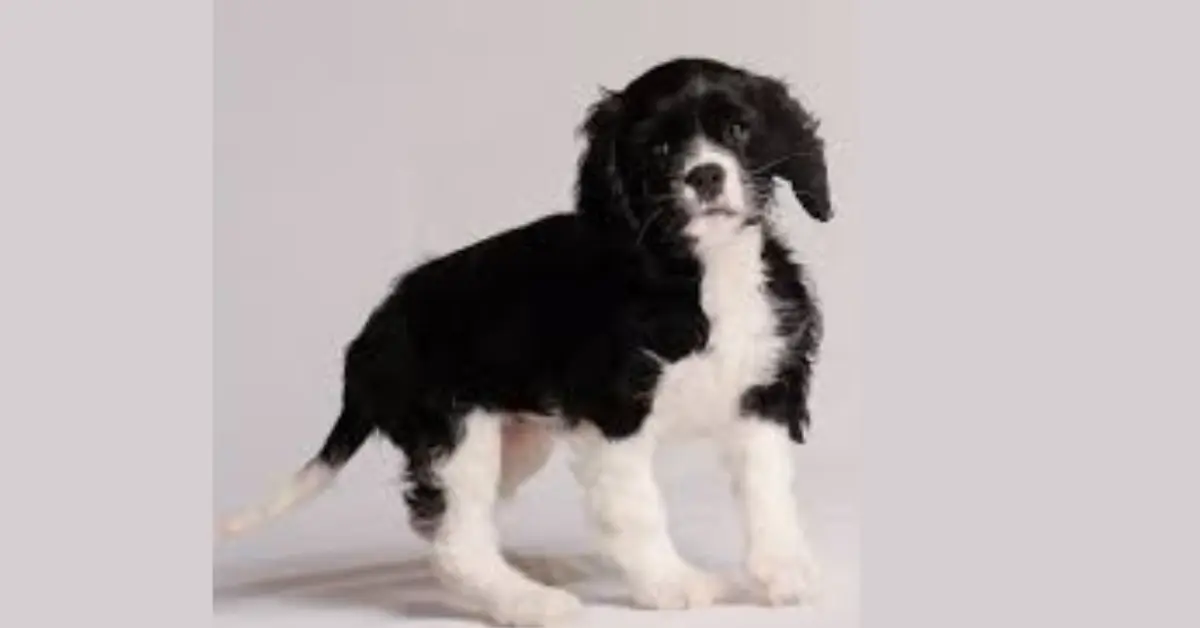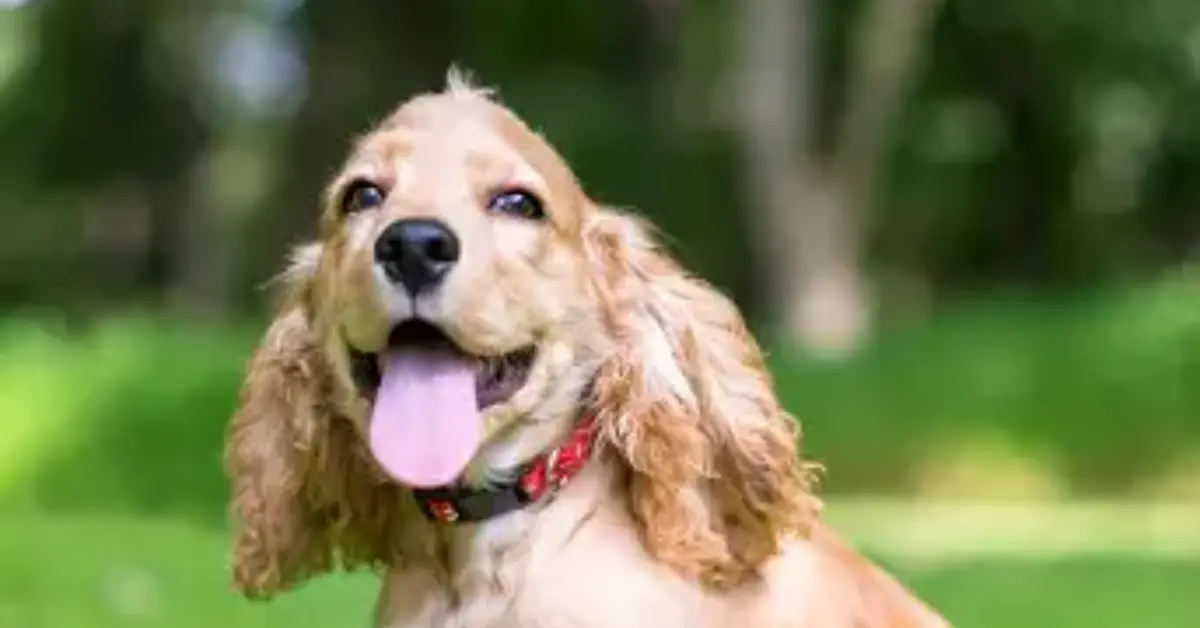
Cockalier Full Grown: Your Complete Guide
Curious about the adorable Cockalier full grown? Imagine a furry friend that’s part Cocker Spaniel, part Cavalier King Charles, and all-around lovable. These charming canines boast a royal lineage and a gentle temperament, making them perfect for families seeking a furry companion. With their expressive eyes and affectionate nature, Cockaliers bring joy to any household. But it’s not all cuddles and playtime—learn about their potential health concerns like syringomyelia and progressive retinal atrophy, ensuring you can provide the best care for your furry friend.
Cockalier Breed Overview |
| Breed: Cockalier |
| Parent Breeds: Cocker Spaniel, Cavalier King Charles Spaniel |
| Size: Medium-sized, typically 12-15 inches tall |
| Weight: 12-28 lbs |
| Temperament: Friendly, affectionate, and playful |
| Coat Colors: Black, brown, red, white |
| Health: Potential issues include syringomyelia and progressive retinal atrophy |
| Care: Regular vet check-ups, grooming, and proper care needed |
| Suitability: Ideal for families and individuals seeking a loving companion |
| Adoption: Consider adopting or rescuing to experience their unique bond |
Cockalier Health
Taking care of your Cockalier’s health is essential to ensure they live a long, happy life by your side. Like any breed, Cockaliers can be prone to certain health issues, so staying informed is key.
One common concern for Cockaliers is syringomyelia, a condition where their brain is too big for their skull, causing pockets to form in their spinal cord. This can lead to discomfort and other symptoms, but with proper treatment and care, your Cockalier can still enjoy a good quality of life.
Another potential issue is progressive retinal atrophy (PRA), a genetic condition that can cause vision loss over time. Regular check-ups with your vet can help monitor your Cockalier’s eye health and catch any issues early on.
Additionally, Cockaliers may be at risk for canine glaucoma, which can lead to increased pressure in the eye and potential vision loss if not treated promptly.
It’s also important to be aware of minor concerns like cherry eye and ear infections, as well as occasional diagnoses such as patellar luxation. Keeping up with regular vet visits and staying proactive about your Cockalier’s health can help prevent these issues from becoming more serious.
Full-Grown Cockalier size

a Cockalier, a delightful mix of Cocker Spaniel and Cavalier King Charles Spaniel, grows to be about 12 to 15 inches tall and weighs between 12 to 28 pounds. Now, that might not sound big, but trust me, they’re packed with personality!
You see, Cockaliers come in all shapes and sizes, but on average, they’re not too towering. They’re just the right size to cuddle up with on the couch or take on a leisurely stroll around the block.
But here’s the thing – their size isn’t what makes them stand out. It’s their boundless energy and affectionate nature that steal the show. Whether they’re bounding through the backyard or curling up in your lap, Cockaliers bring joy wherever they go.
So, if you’re thinking about adding a Cockalier full grown to your family, rest assured they’ll fit right in – size-wise and heart-wise!
Cockalier Breed History
The cockalier breed has a fascinating history that traces back to the blending of two beloved canine companions: the Cocker Spaniel and the Cavalier King Charles Spaniel. While the exact origins of the Cockalier are not precisely documented, it’s believed to have emerged in the latter part of the 20th century, making it a relatively new hybrid breed.
The Cocker Spaniel, known for its hunting prowess and loyalty, brings a rich heritage rooted in Spain and the UK. Originally prized for its ability to flush out game birds like woodcocks, the Cocker Spaniel quickly became cherished as a loyal companion and skilled hunting partner.
On the other hand, the Cavalier King Charles Spaniel boasts a regal lineage, earning its name from its popularity among royalty. With its small stature, silky coat, and gentle demeanor, the Cavalier King Charles Spaniel has long been adored as a lap dog and devoted family pet.
When these two breeds are combined, they create the Cockalier.
Cockalier Breed Appearance

When you set eyes on a Cockalier, you can’t help but be captivated by its charming appearance. These adorable pups inherit traits from both their Cocker Spaniel and Cavalier King Charles Spaniel parents, resulting in a delightful mix of features.
Cockaliers typically have a medium-length coat that comes in various colors like black, brown, red, and white. Their coats can be soft and slightly wavy, adding to their irresistible appeal. One of their most striking features is their expressive eyes, which are usually large and soulful, reflecting their affectionate nature.
With their stocky build and short legs, Cockaliers exude a sense of sturdiness and charm. Their ears are long and floppy, adding to their endearing appearance. Whether they’re bounding around the yard or curling up on the couch, Cockaliers always look utterly adorable.
Cockalier Breed Maintenance
Caring for your Cockalier is key to keeping them happy and healthy. These adorable pups have a medium-length coat that requires regular grooming to prevent matting and tangles. A good brushing session once or twice a week should do the trick, but if your Cockalier has a curlier coat, you might need to brush them more often.
Don’t forget about dental hygiene! Just like us, dogs need their teeth brushed regularly to prevent tartar buildup and decay. Aim to brush your Cockalier’s teeth about once a week to keep their pearly whites shining.
When it comes to exercise, Cockaliers are energetic little dogs who love to play and explore. They’ll need around an hour of exercise each day to stay happy and healthy. Whether it’s a walk around the neighborhood or a game of fetch in the backyard, make sure your Cockalier gets plenty of opportunities to burn off energy.
Feeding a Cockalier Full Grown

Feeding your Cockalier full grown is all about providing them with the right nutrition to keep them healthy and happy. Since Cockaliers are a mix of the Cocker Spaniel and Cavalier King Charles breeds, they have specific dietary needs that you should consider.
These furry friends love high-quality food that contains natural ingredients. It’s best to avoid feeding them human food as much as possible. Look for dog food brands that are transparent about their ingredients and sourcing methods. This way, you can ensure your Cockalier gets the nutrients they need without any harmful additives or fillers.
One thing to be mindful of is portion control. Cockaliers can easily become overweight if overfed, so it’s essential to measure their food carefully and avoid overindulging them with treats.
Since Cockaliers may be prone to heart issues like cardiomyopathy, it’s a good idea to opt for a legume-free dog food that excludes ingredients like peas and lentils, which could contribute to heart problems.
If you’re unsure about which dog food brands to choose, you can check out reviews from reputable sources like Dog Food Advisor. They provide in-depth analyses of different brands, helping you make an informed decision about what to feed your furry friend.
Cockalier Temperament
When it comes to Cockalier temperament, you’re in for a treat! These adorable pups are known for their friendly and outgoing nature, making them perfect companions for families and individuals alike. They’re intelligent and eager to please, which means they’re generally easy to train. Whether you’re teaching them new tricks or just enjoying some quality cuddle time on the couch, Cockaliers are always up for it.
One thing to note is that Cockaliers tend to get along well with other pets and children, especially if they’re introduced at a young age. Their social nature means they’re often happy to make new friends, whether they have fur or not!
From my research, I’ve found that Cockaliers can also make excellent therapy dogs due to their sensitive and loyal nature. Their ability to connect with people on an emotional level makes them perfect for providing comfort and support in various settings.
In terms of activity level, Cockaliers are typically medium-energy dogs. They enjoy their daily walks and playtime but are also content to relax at home with their human companions. So, whether you’re out for a hike or just hanging out in the backyard, your Cockalier will be right by your side, ready for whatever adventure comes their way.
Similar Maintenance Breeds to Cockalier
If you love the Cockalier but want to explore similar breeds that are easy to maintain, you’re in luck! Here are some canine companions with comparable care needs:
- Jackshund: A delightful mix of Jack Russell Terrier and Dachshund, the Jackshund is known for its playful energy and compact size. With moderate grooming requirements and a love for outdoor activities, this breed is an excellent match for active families.
- Wire Foxy Russell: Combining the traits of Wire Fox Terrier and Jack Russell Terrier, the Wire Foxy Russell is a spirited and affectionate companion. With its wiry coat and moderate exercise needs, this breed thrives in homes where it can participate in daily adventures.
- Parson Russell Terrier: A lively and intelligent breed, the Parson Russell Terrier is full of personality and charm. With its short coat and moderate grooming needs, this breed is well-suited to families seeking an energetic yet low-maintenance pet.
- Rhodesian Labrador: A blend of Rhodesian Ridgeback and Labrador Retriever, the Rhodesian Labrador is a gentle giant with a love for outdoor exploration. With its short coat and moderate exercise requirements, this breed is ideal for active households.
- Dane Shepherd: The result of crossing Great Dane and German Shepherd breeds, the Dane Shepherd is a loyal and protective companion. With its large size and moderate grooming needs, this breed thrives in homes where it can receive ample exercise and socialization.
Each of these breeds offers unique qualities and characteristics that make them wonderful companions for families seeking a canine friend with similar maintenance requirements to the Cockalier full grown.
You may like:
| All About Cockador: The Cocker Spaniel Lab Mix |
Final Words
In conclusion, a full grown Cockalier emerges as a delightful blend of the affectionate King Charles Spaniel and the energetic Cocker Spaniel. With their charming demeanor and adaptable nature, Cockaliers make exceptional family companions, bringing warmth and joy to every household. Despite their mixed heritage, Cockaliers possess a rich history rooted in the esteemed lineage of their parent breeds.


